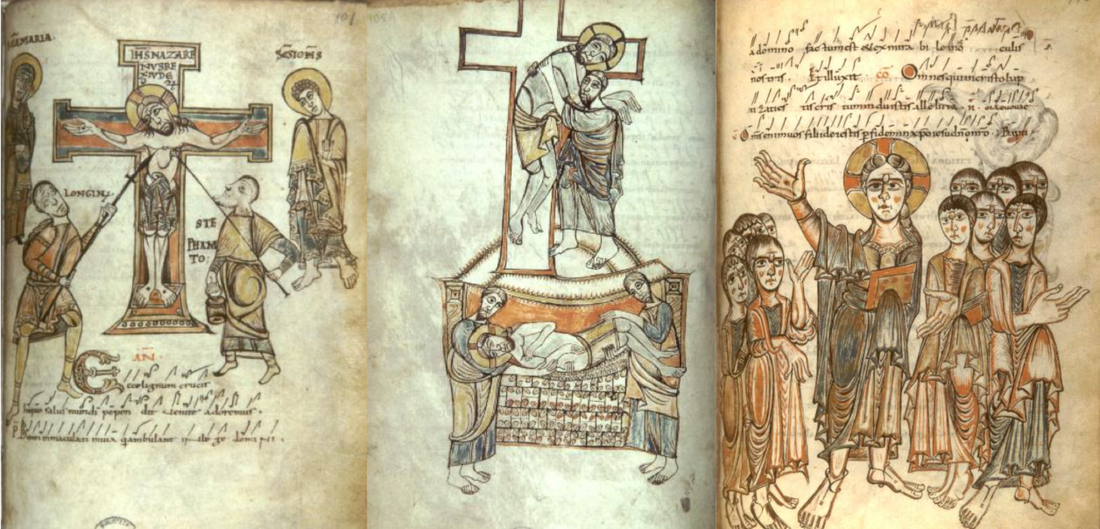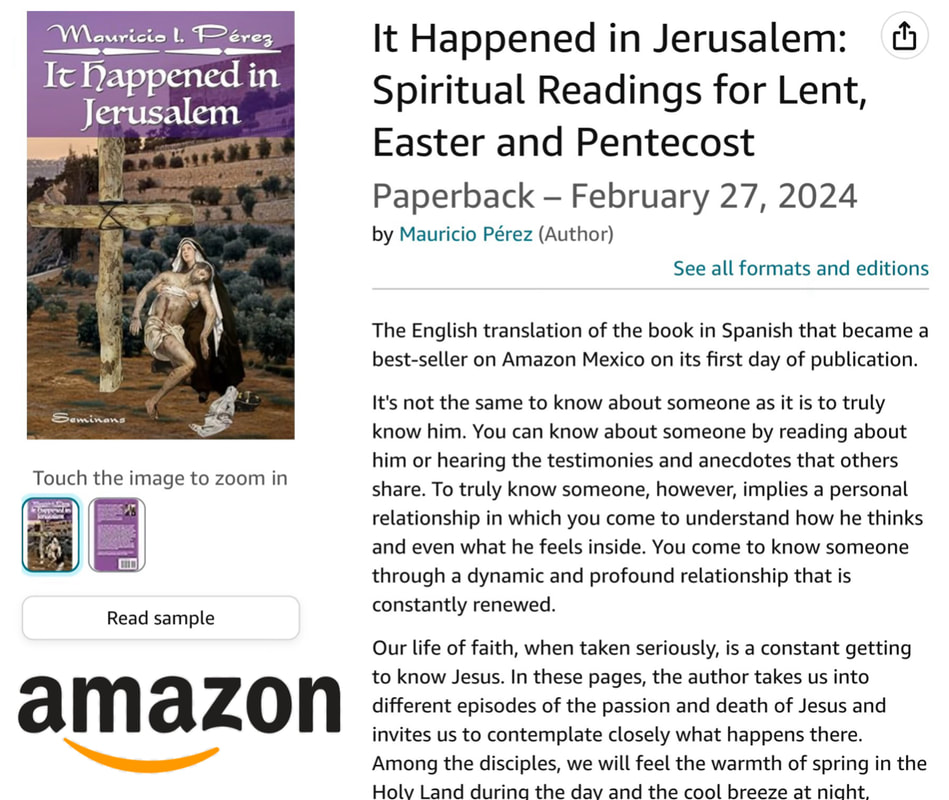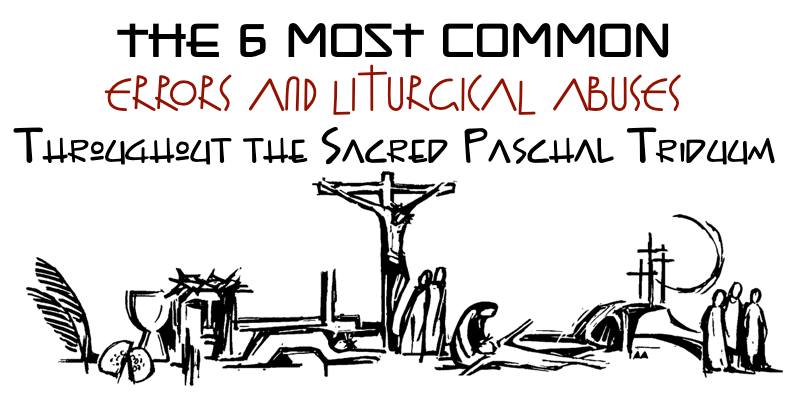|
Well into the second decade of the 21st century, we have become used to the way of celebrating Holy Week: Palm Sunday of the Passion of the Lord on the 6th Sunday of Lent; the Weekdays of Holy Week from Monday to Thursday; the Chrism Mass on Thursday, as the last liturgical act of Lent; the Evening Mass of the Lord's Supper on Holy Thursday, which marks the beginning of the Easter Triduum; the Liturgy of the Hours and the celebration of the Liturgy of the Passion of the Lord on Good Friday; the Tenebrae on Holy Saturday in the morning and the great celebration of the Easter Vigil on the Holy Night, in addition to local devotions in different countries, such as the Stations of the Cross on Good Friday. For many of us, this is the only way we know to celebrate the Holy Week in the Roman rite — it’s celebrated this way since 1956, 68 years ago. It was at Easter that year that the new Ordinary of Holy Week instituted by Pope Pius XII at the end of the previous year came into use. It was, by the way, this change that decisively marked the liturgical reform that would lead to the promulgation of the first of the four constitutions of the Second Vatican Council, the Sacrosanctum Concilium on the Sacred Liturgy, on December 4, 1963. Before this reform, the celebrations of the Easter Triduum attended by our parents and grandparents — then called "offices" — were celebrated in the morning, including the Easter Vigil. A noticeable change after this 1956 reform is to celebrate the rites preferably at the same times that the corresponding mysteries took place: the Last Supper on Thursday afternoon, the death of the Lord on Friday at 3 and the Resurrection at midnight between Saturday and Sunday. Celebrating the Easter Vigil of the Holy Night after the sun has set completely on Saturday night — being Sunday already, liturgically — was one of the most important changes of the reform introduced by Pius XII. Other significant changes were the integration of the rite of the Washing of the Feet to the Evening Mass in the Lord's Supper. The "Sacred Triduum" became the "Easter Triduum". It is now recommended that the Liturgy of the Hours is prayed in all churches together with the people along the Triduum. A recent change, prescribed by Pope Francis in 2016, allows women's feet to also be washed on Holy Thursday. But how did it all start? How did the first Christians begin to celebrate the Passion, Death and Resurrection of the Lord? The birth of the Easter Vigil Let's start with the Easter Vigil in the Holy Night, which is the highlight of the whole Holy Week. Jewish Easter is an annual holiday, which is always celebrated on the 14th of the month of Nisan, in the first full moon of the spring equinox. In those days, Jewish Passover was necessarily located in Jerusalem, but Christian Easter was not linked to that single date or that single place. To begin with, the first Christians celebrated the Easter mysteries of the Lord every week, on Sundays. This celebration was connected with the Last Supper, a memorial of the Passion and Resurrection of the Lord, with a sense of anticipation of his glorious return. Later on, the Church began to celebrate Easter once a year, with the Vigil, in which prior preparation was required through fasting, which in its form and duration varied from one region to another. In several Churches, a 40-day fast was adopted, emulating the fast of Jesus the 40 days he spent in the desert after being baptized by John. This long fast was suspended on Saturdays and Sundays. There were communities in which the Easter fast began six days before Easter Sunday, starting the "Great Week of the Passion". Fasting was mandatory from Good Friday and throughout Saturday, up to and including the Easter Vigil. Being a Vigil, it was celebrated at night, illuminated by the full moon and by lamps and candles. "On this night... the darkness of the night is overcome by the light of devotion," preached in a homily Chromace of Aquileia in the year 407. St. Augustine called it "the mother of all vigils" (Sermon 219). The homilies of those times usually refer to the burning lamps, citing that verse of the psalm that resonates to date in the Vigil when the Easter Proclamation is singed: "And the night will be luminous like the day" (Ps 138:12). It is likely that the lighting of the lamps was accompanied by a rite, which was then consolidated into a true liturgy of the lucernarium, with the blessing of the new fire. Towards the end of the fourth century, in the West the custom of lighting a large Paschal candle became widespread, accompanied by an Easter proclamation, in connection with the baptismal font. The greatest example is the Exsultet, attributed to St. Ambrose, sung by a deacon, and which Augustine recounts with emotion, in The City of God, the time he was commissioned to sing it "by the side of the Paschal candle." The celebration could be introduced by a Paschal preface. The Easter Vigil included readings of the Old Testament: creation (Gen 1), the Passover lamb (Ex 12), the flee from Egypt (Ex 14-15), the sacrifice of Isaac (Gn 22), the song of Moses (Dt 33) and the dry bones (Ez 37). From the New Testament, "Christ is our Passover" (1 Corinthians 5,7-8) and one of the pericopes of the Resurrection in the Gospel. The homily was preached before the readings, after them or at both times. The celebration of Baptism during the Easter Vigil After the homily, baptisms were celebrated. Because baptism was administered by immersion in a pool, it was mainly given to adults. It was carried out in a building adjacent to the church, located near the entrance: the baptistery. In the Apostolic Tradition of Hippolytus we find the oldest description of the baptismal rites, which provided that the candidates should bathe on Holy Thursday, fast on Friday and gather with the bishop on Saturday, praying on their knees. They spent "all night" on Saturday in vigil, listening to readings and instructions about the Christian life. At the crow of the rooster, the candidates were taken to the baptistery where they were immersed in the pool to be baptized. They were dressed in a white garment and, still in the baptistry, the rite of the washing of the feet took place involving the newly baptized, while the corresponding pericope in John’s Gospel was read. The neophytes went in procession to the church next, joining for the first time the assembly of the rest of the faithful, who welcomed them with joy. The celebration continued with the Eucharist. With that Easter Vigil began the time of the holy joy of 50 days until Pentecost, considered "the great Sunday" that had been extended for seven weeks, and prefigured in the Old Testament by the feast of the weeks. In other words, the Easter season, which extends for 50 days (seven times seven days), culminates in Pentecost, which is not only the last day, but the sum and synthesis of those 50 days. The entire Easter Vigil had a strong eschatological connotation, beautifully described by St. Jerome in his comment to Mt: "There is a Jewish tradition according to which the Messiah will come in the middle of the night, like the time in Egypt, when Easter was celebrated and the exterminator came and the Lord passed over the houses, and our foreheads were consecrated with the blood of the lamb. From here I deduce that the apostolic tradition has remained that on the eve of Easter the people are not dismissed before midnight, waiting for the coming of Christ, and only after making sure that He has passed, they all celebrate together." It was in the second half of the fourth century that the Easter celebration began to include, in addition to the Vigil, a Mass on Sunday, the day of the Resurrection. The celebration of the Easter Vigil allows us to grasp the essence of this feast: a rite of passage in which the threshold between death and life is crossed. Ancient authors interpreted the etymological sense of Easter in different ways: either as "the passing of the exterminating angel," or as a "pass of the people," or as a "passion of the Lord." The fact is that the meaning of the Christian Passover is the sacrifice of Christ, the ultimate Easter lamb. Easter begins to be celebrated in three days The desire to delve into the events of passion led to the extension of the liturgical celebration unfolding into a three-day triptych: the Holy Triduum of Good Friday (death on the Cross), Holy Saturday (Jesus' repose in the tomb and his descent into hell) and the Vigil at night until Easter Sunday. Origen describes the Triduum as "The first day is for us the day of the Passion of the Savior, the second is the one in which he descended to hell and the third is the day of the resurrection." The Easter liturgy in Jerusalem gave rise to the chronological representation of the Passion, after Emperor Constantine exalted in the fourth century the places of the crucifixion and burial of Jesus, erecting on them the magnificent basilica of the Holy Sepulchre. This unique building included the Martyrium (place of the Cross), the Anastasis (Holy Sepulchre), an atrium and a baptistery. Thus, the procession of the Palms was born in Jerusalem on the Sunday before Easter: the people, together with the bishop, gathered on the Mount of Olives to listen to the Gospel that describes Jesus' entry into Jerusalem. From there, everyone descended in procession down to the city singing hymns and psalms. That week's celebrations had the Passion as their motif. Holy Thursday — called Coena Domini — commemorated the institution of the Eucharist. The sacrament of reconciliation was administered and the consecration of the holy oils took place. It was in the sixth century that, after the Mass, the "washing of the feet" of twelve poor people began to be performed by the bishop. On Good Friday, a reading, singing and prayer service was held. In Jerusalem, a relic of the Holy Cross was venerated and kissed, a rite that soon spread to many churches in the East and West, for which the relics of the Cross began to be disseminated. Good Friday concluded with the "Mass of the pre-sanctified", that is, with the communion of the sacred bread that had been consecrated the day before. Holy Saturday has always been a day in which the Eucharist is not celebrated. Only after sunset did the great Easter Vigil begin and Mass was celebrated on Resurrection Sunday. Conclusion For Catholics, Holy Week is the most important of the year. The last days of Lent, starting on Palm Sunday, prepare us definitively for the celebration of the Mystery of Redemption throughout the Easter Triduum. The Triduum is not made up of three celebrations, but by a single one, that unfolds like a triptych in three stages. Hence, the Evening Mass at the Lord's Supper on Holy Thursday does not end with a blessing, since it will be given at the end of the Easter Vigil on the Holy Night. The Easter Triduum is not the preparation for Easter. It is, rather, Easter itself. At the end of the day, there cannot be an empty tomb in the Easter Vigil without a Cross in the Liturgy of the Passion of the Lord, and there cannot be a Cross without the Cenacle in the Evening Mass at the Lord's Supper. In order for Christ to rise on the Easter Vigil, he must first die on Good Friday. In order to die for us, He must take us in communion with Him to the cross and thus, He cannot die on the cross without first instituting the Eucharist on Holy Thursday. Be passionate about our faith! _______________ © Mauricio I. Pérez. All rights reserved. Click on the image to order this book.
|
About this BlogPosts written by Mauricio I. Pérez, award-winning Catholic journalist and best-selling author. Archives
Marzo 2024
Categories
Todo
|
- Inicio
- Mauricio I. Pérez
- Blog
- Videos
-
Libros
- Libros
- ¡CON GANAS DE VIVIR!
- El Laberinto del Perdón
- Un Pesebre en tu Corazón
- Oraciones para Una Gotita de Agua
- Escucha... Jesús Habla Desde la Cruz
- Judas ¿Traidor o Instrumento de Dios?
- Sucedió en Jerusalén
- 666 El Criptograma Apocalíptico
- Nuestra Familia al Pie de la Cruz
- Todo lo Puedo en Aquel que me Conforta
- Por los Caminos de la Fe
- The Holy Trinity Explained to Children
- Our Family at the Foot of the Cross
- Tienda
- Apóyanos
- Especiales
Copyright © 2006-2023 Seminans Media & Faith Formation




 Canal RSS
Canal RSS